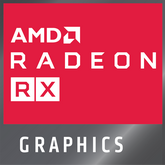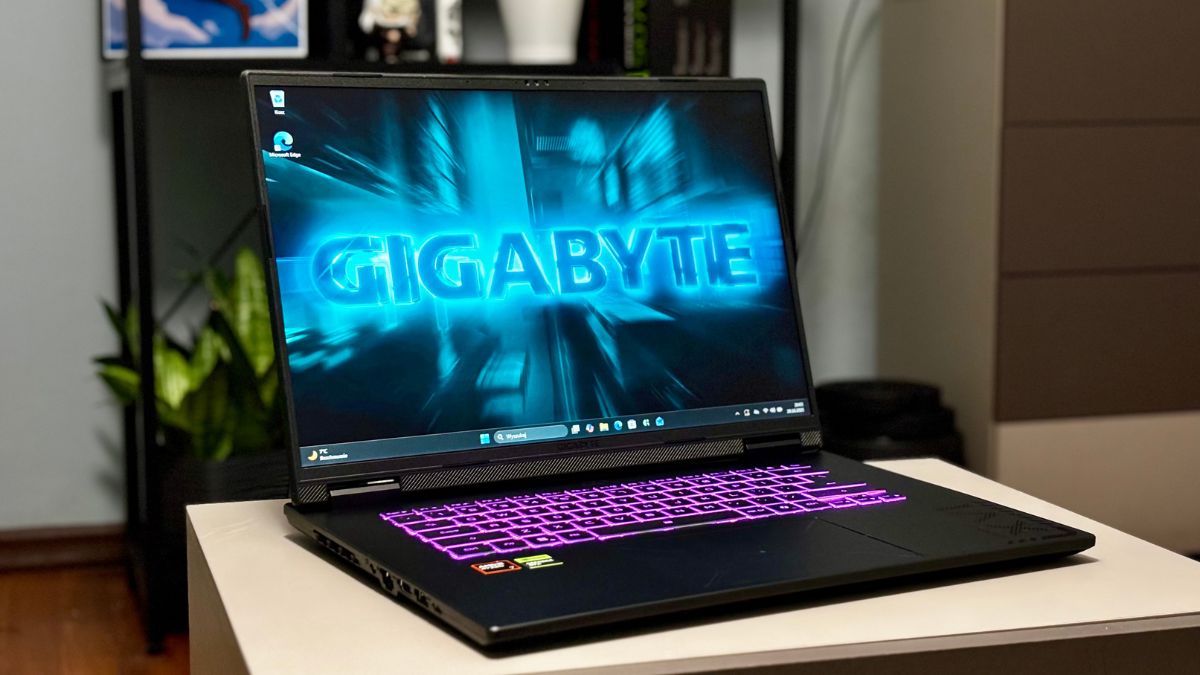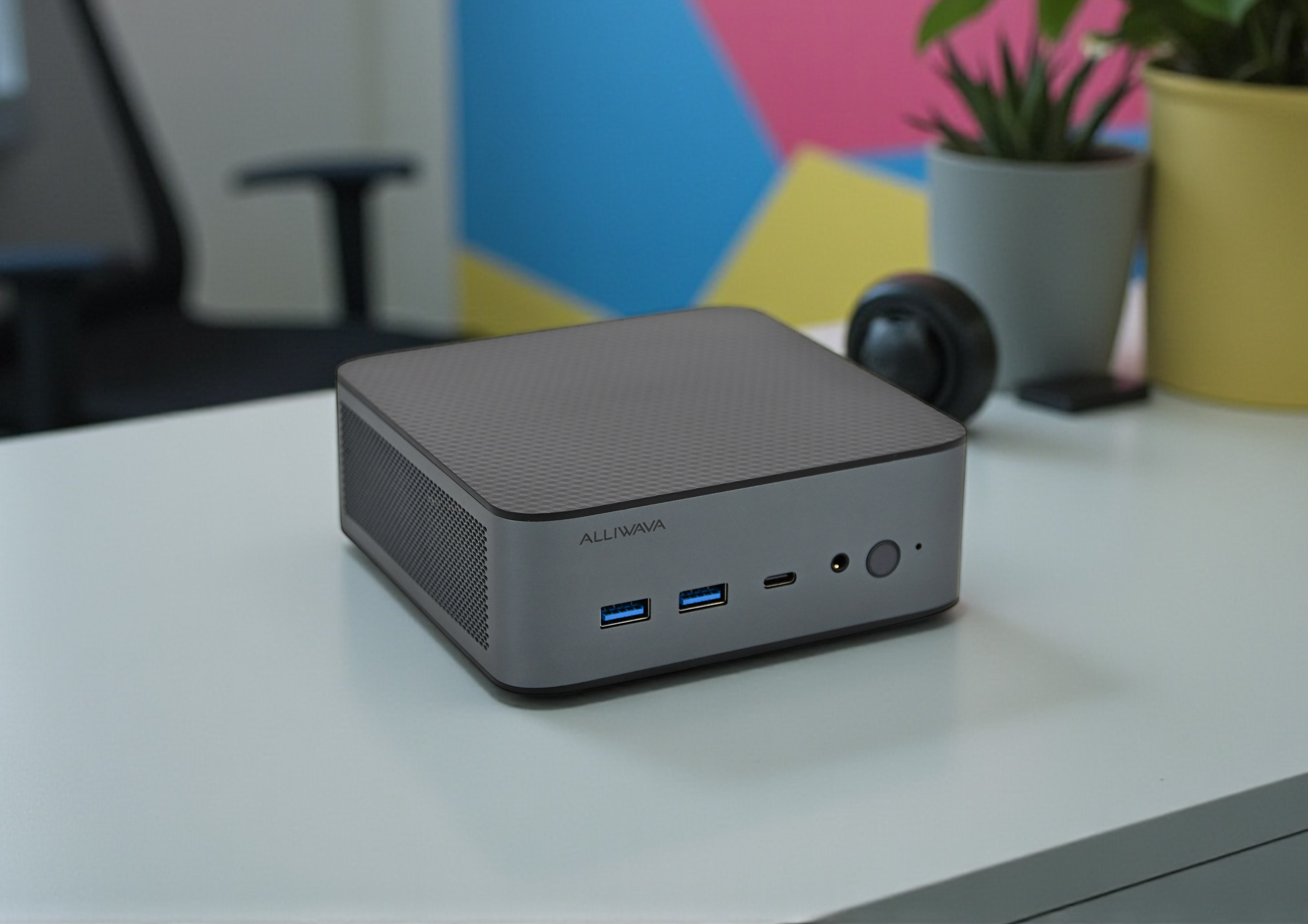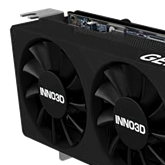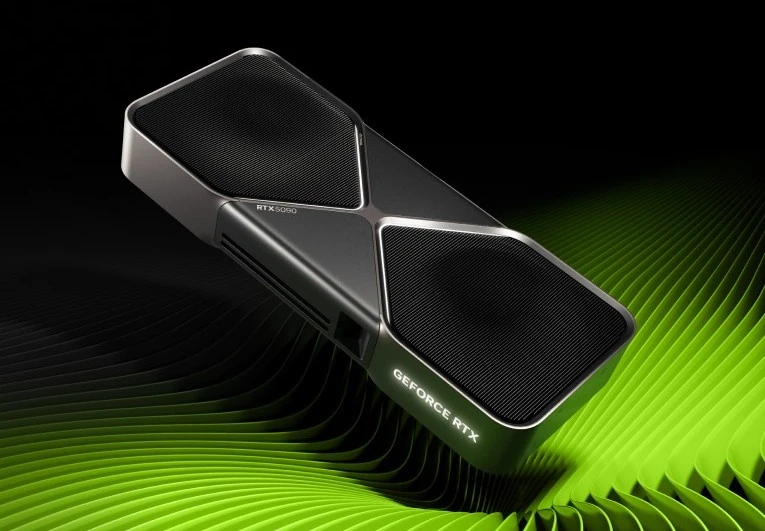- Top Performer: NVIDIA’s GeForce RTX 4090 is the hashrate king, pushing ~130 MH/s on Ethash (Ethereum Classic) and a staggering ~2.0 GH/s on Kaspa cherryservers.com, whattomine.com. However, its 450W power draw and ~$1,600+ price tag mean high operating costs.
- Efficiency Champion: The RTX 40-series GPUs deliver exceptional efficiency. For example, an RTX 4080 can mine ~1.2 GH/s on Kaspa at ~160W whattomine.com, vastly outpacing older cards’ hash-per-watt. The mid-range RTX 4070 Ti also offers great MH/W, making it ideal for miners facing high electricity rates.
- AMD’s Contender: AMD’s flagship Radeon RX 7900 XTX hits ~80 MH/s on Ethash unihost.com and around 1.2 GH/s on Kaspa whattomine.com with 24GB VRAM for large DAGs. It costs less than NVIDIA’s top cards, but its mining efficiency trails slightly behind Nvidia’s Ada Lovelace architecture in core-heavy algorithms.
- Best Value (Used Gear): Last-gen favorites like NVIDIA’s RTX 3080 (~95 MH/s Ethash unihost.com) and the classic AMD RX 580 (~30 MH/s Ethash whattomine.com) flood the second-hand market at bargain prices (e.g. ~$75 for an RX 580 8GB kryptex.com). They can lower your upfront cost, but be mindful of their higher power usage and lower hashrate-per-watt – older GPUs yield far less profit per kWh in 2025.
- Profitability & ROI: With today’s alt-coin prices, GPU mining margins are slim. Even top GPUs may earn only a few dozen cents of profit per day after power costs hashrate.no. At $0.10/kWh electricity, a $1,600 GPU like the RTX 4090 could take over 13 years (4874 days) to repay its cost from mining revenue hashrate.no. Long-term profitability now hinges on efficient hardware and hopes of future coin price surges more than ever.
Introduction: GPU Mining Landscape in 2025
Cryptocurrency mining with GPUs has evolved drastically by 2025. With Ethereum’s mainnet no longer mineable after its 2022 shift to Proof-of-Stake, miners have refocused on altcoins like Ethereum Classic (ETC), Ravencoin (RVN), Ergo (ERG), Kaspa (KAS), and others. These coins use GPU-friendly algorithms (Etchash, KawPow, Autolykos, kHeavyHash, etc.) that let miners repurpose gaming cards for profit. GPU mining remains viable – especially for those who optimize hardware and power – but it’s a tougher game with thinner margins than the ETH mining boom days.
What matters now? Miners must balance raw performance (hashrate), power efficiency, hardware cost, and coin profitability. Newer GPUs boast higher hashrates, but efficiency (MH per watt) often dictates actual profit once you pay the electric bill. Meanwhile, the used market is flooded with last-gen cards from ex-Ethereum farms, creating opportunities for budget miners. In this report, we’ll round up the best graphics cards for crypto mining as of 2025 – from cutting-edge RTX 40-series and RX 7000-series beasts to workhorse older models still chugging along – and evaluate them on performance, efficiency, price, and suitability for different mining scales.
Whether you’re a hobby miner looking to deploy a couple of GPUs in your gaming PC, or a large-scale operator managing a mining farm, this guide will help identify which GPUs are crypto mining gold and which might be fool’s gold in the current landscape.
Mining Performance: Hashrates on Top Coins
When measuring a GPU’s mining performance, hashrate is king. This is the speed at which a GPU can perform the algorithmic computations for a given coin. Different coins = different algorithms, and GPUs may excel at some and fare worse at others. Below we compare the approximate hashrates of popular GPUs on four major mineable coins of 2025 – Ethereum Classic (ETC) using Ethash/Etchash, Kaspa (KAS) using kHeavyHash, Ravencoin (RVN) using KawPow, and Ergo (ERG) using Autolykos. Power figures indicate the typical wattage when optimized for that algorithm (usually via undervolting/overclocking in mining software):
| NVIDIA RTX 4090 | ~130 MH/s @ 300W unihost.com | ~2.0 GH/s @ 240W whattomine.com | ~60–65 MH/s @ 350W kryptex.com | ~265 MH/s @ 350W cherryservers.com | ~$1600 new cherryservers.com |
| NVIDIA RTX 4080 | ~100 MH/s @ 250W (est.) unihost.com | ~1.2 GH/s @ 160W whattomine.com | ~50 MH/s @ 250W (est.) | ~220 MH/s @ 300W (est.) | ~$1200 new |
| NVIDIA RTX 4070 Ti | ~60 MH/s @ 225W unihost.com | ~0.8–0.9 GH/s @ 120W whattomine.com | ~40 MH/s @ 200W (est.) | ~150 MH/s @ 250W (est.) | ~$800 new |
| AMD RX 7900 XTX | ~80 MH/s @ 300W unihost.com | ~1.1–1.2 GH/s @ 270W whattomine.com | ~55–60 MH/s @ 300W kryptex.com | ~190 MH/s @ 300W kryptex.com | ~$900 new cherryservers.com |
| NVIDIA RTX 3080 | ~95 MH/s @ 240W unihost.com | ~0.75–0.90 GH/s @ 200W whattomine.com | ~35–45 MH/s @ 320W unihost.com | ~170 MH/s @ 250W kryptex.com | ~$400–$600 used |
| AMD RX 6800 XT | ~60 MH/s @ 170W unihost.com | ~0.85 GH/s @ 160W whattomine.com | ~30 MH/s @ 200W (est.) | ~150 MH/s @ 200W (est.) | ~$500 used |
| NVIDIA RTX 3060 Ti | ~60 MH/s @ 130W (LHR unlocked) | ~0.40 GH/s @ 120W (est.) | ~14 MH/s @ 140W | ~100 MH/s @ 130W | ~$250 used |
| AMD RX 580 8GB | ~30 MH/s @ 130W whattomine.com | ~0.20 GH/s @ 130W whattomine.com | ~13 MH/s @ 170W whattomine.com | ~60 MH/s @ 120W whattomine.com | ~$75 used kr |
Table: Approximate hashrates and power draw for popular GPUs on key algorithms (Ethernet Classic, Kaspa, Ravencoin, Ergo). Newer models dominate raw speeds, while older GPUs can still mine but at much lower efficiency. “Est.” denotes estimates from community data when official figures are unavailable.
As shown above, NVIDIA’s latest generation boasts the highest hash outputs. The RTX 4090 tops the charts with ~2 GH/s on Kaspa’s core-intensive algorithm whattomine.com – nearly 10× the Kaspa hashrate of an old RX 580 (which manages ~0.2 GH/s) – and it still churns out ~130 MH/s on memory-heavy Ethash unihost.com (comparable to roughly four RX 580s worth of ETH hashpower). The RTX 4080 isn’t far behind and actually achieves similar 1.2 GH/s performance on Kaspa at an even lower wattage whattomine.com, thanks to its efficiency-oriented design. These high-end cards also handle Ravencoin’s GPU-intensive KawPow algorithm well (dozens of MH/s range), although Ravencoin generates lower MH numbers than Ethash due to its complexity.
AMD’s high-end cards like the RX 7900 XTX also deliver strong hashrates – ~1.1–1.2 GH/s on Kaspa and around 80 MH/s on Ethash unihost.com, whattomine.com – but typically fall slightly behind Nvidia’s best in absolute terms. For example, the 7900 XTX hits about 60 MH/s on Ravencoin (vs. ~65 on a 4090) and ~190 MH/s on Ergo (vs. 265 on a 4090) according to testing kryptex.com. Still, AMD’s top cards have plenty of horsepower for mining any current GPU-mineable coin, and their large memory buffers (20–24GB) easily handle large DAGs (important for coins like ETC or ERG).
Last-generation GPUs (RTX 30-series and RX 6000-series) remain widely used in mining and offer decent performance for lower cost. An RTX 3080 can do ~95 MH/s Ethash unihost.com and ~0.8 GH/s on Kaspa with proper tuning whattomine.com – roughly 40% less hashrate than a 4090, but often available at a fraction of the price on secondary markets. Similarly, AMD’s previous flagship RX 6800 XT hits ~60 MH/s Ethash unihost.com and close to 0.85 GH/s on Kaspa whattomine.com, respectable figures that still beat many mid-tier newer cards. Mid-range champions like the RTX 3070 or 3060 Ti (which did ~60 MH/s on Ethash when LHR locks were bypassed) are popular for their balance of good hashrate and moderate power needs.
At the low end, older GPUs such as the RX 580 or GTX 1660 Super can mine, but their performance is modest. The RX 580 8GB manages ~30 MH/s on ETC and ~13 MH/s on RVN whattomine.com, which was great in 2017 but pales next to today’s cards. They can still mine Ergo surprisingly well (~59 MH/s) due to its lighter algorithm whattomine.com, but overall, one modern GPU can outperform an entire rig of five-year-old cards. For example, one RTX 4090 equals 6–8× RX 580s in Ethash hashrate and an even larger multiple in Kaspa performance – illustrating how far GPU tech has come.
In summary, if raw performance is your goal (e.g. maximizing hashrate for a given farm size), Nvidia’s 4090 and 4080 are the mining monsters of 2025, with AMD’s 7900 XTX and Nvidia’s 4070 Ti/4090 Ti (if available) not far behind. But performance is only half the story – we must consider efficiency and costs to find the best mining GPU for your situation.
Power Efficiency: Hashrate per Watt Matters
In today’s mining environment, power efficiency is arguably more important than brute force hashrate. Electricity is often the largest ongoing cost for miners, and with many coins’ block rewards relatively low, running an inefficient GPU can quickly eat away any mining revenue. The goal is to maximize hashrate for each watt of power – yielding more coin for the same electric bill.
Newer GPUs are markedly more efficient than previous generations. Nvidia’s Ada Lovelace architecture (RTX 40-series) made big gains in hash-per-watt, especially on core-intensive algorithms. For instance, the RTX 4080 hitting ~1.2 GH/s on Kaspa at only ~160W translates to 7.5 MH/W efficiency whattomine.com. Compare that to an older GTX 1080 which might get ~0.15 GH/s at 180W (~0.83 MH/W), or an RX 580’s ~0.2 GH/s at 130W (~1.54 MH/W) on Kaspa whattomine.com – the 4080 is in another league, squeezing about 5× more hashes per watt than a 2017-era card. Even Nvidia’s last-gen champs like the RTX 3080 or 3090, which were considered efficient in their time, achieve on the order of 4–6 MH/W on Kaspa when undervolted (e.g. ~910 MH/s at 150W for a 3090 equals ~6.1 MH/W) whattomine.com, still below the ~8+ MH/W that a 4090 can reach.
On memory-bound algorithms like Ethash/Etchash, efficiency gains have been more modest. Many GPUs hit a memory bandwidth wall, so they end up power-limited. For example, an RTX 3070 (2020) can do ~60 MH/s at ~130W (≈0.46 MH/W), whereas an RTX 4070 Ti (2023) does ~60 MH/s at ~225W stock unihost.com (≈0.27 MH/W). In fact, previous-gen cards like the RTX 3060 Ti/3070 were efficiency sweet spots for Ethash – their GDDR6X-less designs and 8GB frames meant one could fine-tune power down without losing much hashrate, achieving ~0.5 MH/W in best cases. By contrast, an RTX 3090 or 4090 might only manage ~0.3–0.4 MH/W on Ethash at stock settings. The takeaway: for memory-heavy coins (ETC, ERG), high VRAM bandwidth matters more than sheer core count, so a used 3080 Ti/3090 (with 384-bit buses) can be nearly as efficient as the latest 4090 which has similar memory specs kryptex.com.
On core-heavy algorithms (Kaspa, Ravencoin, Flux, etc.), the newer architectures shine. Nvidia’s 40-series and AMD’s 7000-series both improved performance-per-watt by leaps. The RTX 4070 (a mid-tier card) reportedly delivers ~800 MH/s on Kaspa at ~90–120W after tuning reddit.com – roughly 8–9 MH/W, putting it among the most efficient mining GPUs ever. Similarly, AMD’s efficiency jumped from the RX 6000 to 7000 series; for example, the RX 6800 XT gets ~870 MH/s at 160W on Kaspa (5.4 MH/W) whattomine.com, while the newer RX 7900 XTX manages ~1200 MH/s at 270W (4.4 MH/W) – an improvement, though still trailing Nvidia’s top-end in watt-to-hash ratio.
For miners, high efficiency means more profit and less heat. A card that hashes twice as efficiently lets you either double your output for the same power, or, seen another way, endure only half the electricity cost for the same yield. This is crucial in 2025’s market where profit margins are slim. Many miners now optimize by undervolting and clock-tuning GPUs to hit the efficiency sweet spot. It’s often better to run a card at 80% of its max hashrate if it draws 50% of the power at that setting – the slightly lower hashrate is more than compensated by the huge boost in MH per watt (and a cooler, quieter rig). Professional mining software and drivers allow fine-grained control (core clock, memory clock, voltage) to achieve these optimizations.
In summary, the best mining GPUs are those that give the most hashes per watt, not just the most hashes. Nvidia’s RTX 4080/4090 and mid-range 4070 Ti currently lead in efficiency on many algorithms, while AMD’s cards offer decent efficiency and tend to be more cost-effective per unit (as we’ll discuss next). If your electricity is expensive or you’re power-constrained, choosing GPUs with superior efficiency (even if the upfront cost is higher) will pay off in the long run.
Pricing and Availability: New vs. Used in 2025
The cost of mining hardware is a critical factor in your return on investment. GPU prices have seen wild swings in recent years – from the inflated prices and shortages of the 2021 crypto boom to the price crash of used GPUs after Ethereum’s mining ended in 2022. Here in 2025, the market has largely stabilized, but availability and pricing still depend on demand from both miners and gamers.
New GPU Prices: High-end cards remain expensive. Flagship MSRP’s are around $1,600 for RTX 4090 and $1,000+ for RX 7900 XTX cherryservers.com. Mid-tier new GPUs like a 4070 Ti still run ~$800. These prices are at or above launch MSRPs, and popular models can see scarcity when mining or AI demand spikes. For example, during coin rallies, even cards like the RTX 4080 Super (if launched) might sell out and command a premium over its ~$1199 base price cherryservers.com. Limited supply and high demand can “jack up prices” as one report notes cherryservers.com, especially for GPUs that are mining-efficient.
Used Market Deals: On the flip side, the used market is a goldmine for budget-conscious miners. After Ethereum’s Proof-of-Stake transition, second-hand GPUs flooded marketplaces as former miners offloaded hardware. As a result, you can find previous-gen cards at heavy discounts. For instance, a GTX 1070 Ti might go for ~$85, a GTX 1660 Super ~$100, or an RTX 2060 ~$105 according to recent listings kryptex.com. AMD’s older cards are similarly cheap – an 8GB RX 580 often sells for under $80 now kryptex.com. Higher-tier last-gen GPUs like RTX 3080s have dropped closer to $400–$500 depending on condition, which is roughly half their launch price. The cost-per-hash is often very attractive on these used units: you’re paying pennies on the dollar compared to new cards.
However, there are caveats to used GPUs. They likely had a hard life in mining rigs, running 24/7 at high temperatures. This could shorten their remaining lifespan or make them more prone to failures (e.g. fan wear or VRAM degradation). It’s wise to check seller reputations, test cards on delivery, and perhaps budget for replacing thermal paste or pads on a used GPU to refresh its cooling. Still, for many hobby miners, a couple of $200 used 3070s is a far more affordable start than a single $1600 4090.
Availability: As of 2025, new generation GPUs are generally available through retail channels, albeit at high prices. We are not seeing the extreme shortages of 2021, but certain models can still be hard to find if they hit the sweet spot of mining profitability. For example, a mid-range card that’s very efficient (like a hypothetical “RTX 4070 Super” or AMD’s latest mid-tier) might sell out because miners scoop them up for farms. Production capacity and the broader PC market also influence availability – if gamers aren’t buying as many high-end GPUs, you might find those sitting in stock, whereas a mid-priced card that appeals to multiple segments could see supply tight. On the used front, there’s an abundance of older cards, though the best deals get bought quickly. If crypto prices surge, expect the used market to dry up fast as miners re-horde gear.
In short, 2025 offers miners a buyer’s market for last-gen GPUs – great for starting a low-cost rig – while new top-of-the-line cards remain a considerable investment. Always weigh the cost of a GPU against its performance and efficiency. Sometimes a card that’s half the price but gives 70% of the hashrate (e.g. a used RTX 3070 vs. a new 4070 Ti) can yield a better ROI in the end.
Long-Term Profitability and ROI Considerations
Profitability in GPU mining is a moving target. It depends on multiple volatile factors: coin prices, network difficulties, power costs, and hardware performance. As of 2025, many miners have seen their profits pinched by a combination of lower crypto prices (post-2021) and high global energy costs, meaning calculating return on investment (ROI) is more critical than ever.
Let’s be candid: ROI times for GPUs have lengthened dramatically since the golden era of Ethereum mining. Where once you might recoup a GPU’s cost in 6-9 months mining ETH, now it can take several years to pay off a graphics card with altcoin mining profits. For example, at current rates a top-tier RTX 4090 earning about $0.30–$0.40 in profit per day hashrate.no could take over 13 years to break even on its ~$1600 cost hashrate.no. Naturally, no miner plans on a 13-year ROI – such projections assume coin prices and difficulty remain static (which they won’t). They do, however, underscore that immediate profits are slim in the present climate.
Hashrate.no and other mining calculators show that many GPUs are near or even below break-even if you pay ~$0.10/kWh for electricity. An AMD RX 580, for instance, might actually lose a few cents per day on some algorithms once power cost is included, since it’s not very efficient 2cryptocalc.com, whattomine.com. This has led miners to either seek the most efficient GPUs (to maximize the tiny profit margin) or speculate on future coin values by HODLing the mined coins rather than selling immediately. The hope is that if you mine and hold a coin like Kaspa, its price might appreciate enough to make your mining far more profitable in hindsight, even if day-to-day profits are meager.
For long-term profitability, here are some considerations:
- Choose the Right Coin: After Ethereum’s exit, no single coin has come close to its profitability. Instead, miners often mine the most profitable coin of the moment (which can change frequently) or a coin they believe has big upside. Kaspa, Ergo, Ravencoin, Flux, Neoxa, and others all have had moments where they were the top profitable GPU coin. Flexibility is key – GPUs allow you to switch algorithms on the fly. Many use aggregators like NiceHash or mining OS software that will automatically move your GPUs to whatever yields best profit. This adaptability is an advantage GPU mining retains over ASICs.
- Electricity Cost: It’s often said, but cannot be overstated: electric rate can make or break a mining operation. At $0.05/kWh (perhaps with industrial rates or subsidized power), mining can still be quite profitable on efficient GPUs. At $0.20/kWh (typical in some regions or for residential power), even the best GPU might not net positive income. Some large miners have relocated to areas with cheap electricity or use renewable energy sources to get an edge. As an individual, know your rate and calculate accordingly – use online calculators to plug in your kWh cost and see which GPUs and coins yield a profit.
- Rig Infrastructure and Scaling: Large-scale miners achieve better profitability through economies of scale – they often get bulk discounts on hardware, run dozens or hundreds of GPUs in optimized conditions (cooling, efficient PSUs, etc.), and may have lower maintenance cost per GPU. Hobbyists have higher relative costs, so it might take longer to reach ROI. However, hobby miners can sometimes take advantage of “free” situations (like solar panels at home, or using the GPU’s heat in winter to offset heating bills) which effectively improve profitability in creative ways.
- Resale Value: One often overlooked aspect of ROI is the potential resale value of the GPU. High-end GPUs retain value for gaming, AI, etc. For example, an RTX 3080 or 4090 can be resold to recoup some investment if you stop mining. In contrast, a specialized ASIC has little resale value outside mining. This means GPUs have a kind of built-in hedge for long-term ROI – if mining doesn’t pay off, you can sell the card to recover part of the cost (especially if you maintain it well). Nvidia cards historically have had better resale because of stronger demand in secondary markets (gamers, professionals), whereas certain AMD models or mining-specific cards (like Nvidia CMP series) might be harder to sell. Keep this in mind: a GPU’s “real” cost is what you paid minus what you can sell it for later.
In conclusion on profitability: temper your expectations and run the numbers before investing in a mining GPU. The best strategy for 2025 is to optimize for efficiency, mine coins you believe in (or dynamically mine the most profitable), and consider mining as a longer-term play rather than a quick ROI machine. Those who survived the post-ETH shakeout are often in it for the long haul, banking on the next bull market to make their mining rewards far more valuable.
Hobbyist vs. Large-Scale Mining: Choosing GPUs for Your Needs
The “best” GPU for mining can differ depending on whether you’re a solo hobbyist or managing a large-scale operation. Let’s break down some considerations for each scenario:
Hobbyist Miners (Small Rigs or Dual-Purpose PCs)
If you’re a hobby miner, you might be running a few GPUs in a home setting – maybe in a dedicated open-air rig or even in your personal computer that you also use for gaming or work. Key factors include noise, heat, and versatility.
- Mid-Range Sweet Spots: Hobbyists often favor GPUs that give good efficiency without extreme power draw. Cards like the RTX 3060 Ti/3070 or RX 6700 XT/6800 XT are popular because they draw ~120-200W each, which is manageable on a normal 15A household circuit even with a few cards. They also generate less heat and noise than the 300-450W monsters, meaning you can run them in a spare room without as much disruption. A card like the RTX 4070 Ti is nearly perfect for a small rig: 250W TDP, excellent efficiency, and still decent resale value if you change plans unihost.com, blog.servermania.com.
- Initial Cost vs. Payback: Hobby miners often have tighter budgets. It might make sense to buy used GPUs to lower initial costs, even if they’re less efficient. For example, picking up three used GTX 1660 Supers for $300 total could be more appealing than one new RTX 4070 for $600+, even if the 4070 outperforms them, because the hobbyist can incrementally expand the farm as funds allow. Just remember, more GPUs = more potential headaches (risers, motherboard, maintenance), so there’s a balance.
- Dual-Purpose Use: If your GPU also doubles for gaming or content creation when not mining, that might sway your choice. Nvidia’s RTX cards have strong gaming and even AI capabilities, whereas some AMD cards might lag in those areas or have less broad software support. The RTX 4090, while expensive, is an example of a card that a user might justify because it’s the top gaming GPU and a productivity beast, in addition to mining well. Meanwhile, running an ex-mining RX 580 for gaming in 2025 is a bit dated. So hobbyists might weigh personal use cases in their GPU selection more heavily than pure mining ROI.
Large-Scale Miners (Farms and Mining Operations)
Large-scale GPU miners – those running dozens, hundreds, or even thousands of cards – operate more like a business. The considerations here are efficiency at scale, manageability, and consistency.
- High Hash Density: In a mining farm, physical space and slots are a limitation. A card like the RTX 4090, with its enormous 2 GH/s Kaspa output whattomine.com, offers very high hash density (hashrate per card). This can reduce the overhead of additional system components (one motherboard/CPU/PSU can support fewer high-hash cards vs. many low-hash cards). Thus, farms might lean toward top-end GPUs despite the cost, because managing 100 high-hash cards could be simpler than 300 lower-hash cards for the same total output. High-end GPUs also often have better cooling solutions which survive farm conditions longer.
- Professional/Mining-Specific GPUs: Large miners also consider mining-specific GPUs or data-center cards. Nvidia’s CMP series (e.g., 170HX with 164 MH/s Ethash cherryservers.com) or the newer Nvidia L4 Tensor Core GPU are examples. The L4, for instance, is a 250W data-center card touted for excellent efficiency in sustained workloads blog.servermania.com. It offers 24GB VRAM and low profile, making it suitable for high-density server rigs. Farms might deploy such cards in server chassis to maximize uptime and density. The downside is these often lack resale value and can be pricey upfront (the CMP 170HX was over $4k initially cherryservers.com). But for large operations, stability and efficiency can trump versatility.
- Uniformity and Maintenance: Farms often pick one or a few models and buy in bulk. Managing a farm is easier if all GPUs are identical (or at least a few types) because you can apply the same overclock settings, maintain spares for each model, and have a consistent performance profile. So, a farm might determine that, say, the RTX 3080 Ti gives the best balance and deploy 200 of them, rather than mixing 50 of this and 50 of that. Uniformity reduces the complexity of troubleshooting and optimizing. Many large miners in the past standardized on GPUs like the GTX 1070 or RTX 3060 Ti during their peaks of efficiency.
- Cooling and Infrastructure: Large operations must also factor in cooling and power delivery. A card that runs too hot or draws too much power per unit can increase costs for cooling systems and require more robust (expensive) PSUs, PDUs, etc. Sometimes underclocking the highest-end cards to improve efficiency (and reduce heat) yields more net profit. The RTX 3090 Ti, for example, while very fast, runs hot and at 450W stock it strains cooling; some farms avoided it in favor of the 3080 or 3070 which were easier to keep cool. In 2025, the same logic might apply to preferring a fleet of 250W cards vs. 450W cards, unless you have an exceptionally good facility for heat dissipation.
In summary, hobbyist miners will likely gravitate towards mid-range, cost-effective GPUs (or used bargains) that fit their power and space constraints, whereas large-scale miners optimize around efficiency at scale, often using high-end or specialized GPUs to maximize hashrate density and ease of management. Both should always consider the reliability and support of the cards – a mining farm can’t afford too many cards dying under warranty, and a lone hobbyist can’t afford a card that constantly gives issues.
NVIDIA vs. AMD: Which Reigns Supreme for Mining?
The age-old debate of Nvidia vs AMD extends into crypto mining, with each having its historical strengths. In 2025, NVIDIA GPUs generally lead in versatility and top-end performance, while AMD GPUs often win on value (hashrate per dollar) for certain algorithms – but the gap isn’t black-and-white.
Raw Performance: Nvidia currently offers the absolute fastest mining GPUs (the RTX 4090/4080). These cards leverage Nvidia’s CUDA architecture and typically outpace AMD on many algorithms. For instance, Nvidia cards dominated Ethash mining in 2020–2022 once memory optimizations (like the “LHR unlocks”) were sorted, with the RTX 3090 Ti hitting ~120 MH/s versus AMD’s best at ~80 MH/s unihost.com, cherryservers.com. In core-heavy coins, Nvidia’s architecture (especially 30-series and 40-series) often yields higher hashrates – e.g. on Ravencoin’s KawPow or Flux’s Equihash, Nvidia GPUs historically performed better per similar tier. The current Kaspa craze is also largely Nvidia-led, with the RTX 30/40 series achieving groundbreaking hash and efficiency.
Efficiency: This round also tends to favor Nvidia’s latest-gen. The RTX 40 series efficiency we discussed is hard for AMD to match on algorithms like kHeavyHash or KawPow. However, AMD’s RDNA2 and RDNA3 cards are by no means power hogs – the 6800 XT and 6900 XT were actually competitive in efficiency on Ethash (slightly less efficient than Nvidia but close unihost.com), and they have improved on other algos. AMD cards sometimes excel in memory-intensive algorithms due to their high memory bandwidth and Infinity Cache. For example, some miners found AMD’s RX 6000 cards were extremely efficient on Ergo’s Autolykos algorithm (which has lower power usage), sometimes outperforming Nvidia in MH/W. On the flip side, Nvidia’s cards often handle higher core clocks better, aiding algorithms like Kaspa or Nexa.
Cost and Value: Where AMD often shines is price-to-performance. AMD GPUs usually launch cheaper for a given performance bracket. In mining, this means you might get more MH per dollar spent with an AMD card, albeit at a slightly higher wattage. For example, the RX 7900 XTX is about $600 cheaper than an RTX 4090, yet it delivers, say, ~75% of the 4090’s Ethash hashrate unihost.com and perhaps ~60% of its Kaspa hashrate – that could be a good tradeoff for many. Similarly, an older AMD RX 6700 XT (if bought used) might give 45 MH/s for a couple hundred bucks, whereas an Nvidia RTX 3070 giving 60 MH/s might cost a bit more second-hand. If you’re capital-constrained, AMD cards let you build a bigger farm for the same money. The downside is you’ll pay more in electricity over time for that farm if the cards are less efficient. Thus, there’s a bit of an ROI calculus: cheaper AMD card vs. pricier but more efficient Nvidia card.
Resale and Dual-Use: Nvidia cards historically have had stronger resale value and wider adoption in secondary markets (gamers love GeForces; Nvidia’s CUDA is needed for many productivity apps). AMD cards, while they can game well, sometimes are less desired used – e.g. an ex-mining RX 5700 XT might sell for much less than an equivalent RTX 2060. So if part of your plan is to resell or repurpose GPUs, Nvidia might have an edge in holding value. Also, if you plan to use the GPU for things like AI research, Nvidia’s ecosystem (Tensor cores, better software support) is a big advantage.
Mining Software and Support: Both Nvidia and AMD are well-supported by modern mining software (e.g. Trex, lolMiner, TeamRedMiner, NiceHash QuickMiner). In earlier days, AMD cards sometimes required more finicky setups (manually adjusting BIOS timings on Polaris cards for ETH, etc.), whereas Nvidia was more plug-and-play. These days, both have robust tools and communities. AMD tends to require using OpenCL or ROCm backends in miners, Nvidia uses CUDA – most popular miners include both. One note: when Ethereum was around, Nvidia’s LHR (Lite Hash Rate) locks on 30-series cards caused drama, requiring special workarounds to unlock full Ethash speed. AMD never had such artificial locks. By 2025 this is moot (LHR is fully bypassed or irrelevant on current coins), but it highlights that Nvidia had implemented anti-mining measures that took time to overcome minerstat.com, something that gave AMD a period of advantage for miners who didn’t want any fuss.
Algorithm Specialties: There are specific algorithms where one brand can outperform. For example, older AMD cards (Polaris 4GB) became popular for ProgPoW variants and certain core-heavy coins after they could no longer mine ETH (due to DAG size), as they were cheap and decent at those. Nvidia’s cards often excel at Equihash (used by Zcash, etc.) and CuckooCycle (Grin) thanks to strong parallel cores. If a new coin appears favoring a certain architecture, this could tilt the balance. Generally, Nvidia’s architecture is considered more balanced between compute and memory, whereas AMD historically had super memory bandwidth (great for Ethash) but sometimes lagged in raw compute for certain tasks. The RDNA architecture, though, has narrowed that gap significantly.
Overall, in 2025 Nvidia holds the performance crown and arguably the efficiency crown, especially with the RTX 40-series dominating hashrate charts cherryservers.com. AMD offers compelling options, particularly if you are cost-sensitive or already invested in their ecosystem. A prudent mining operation might even use a mix: Nvidia cards for certain algos, AMD for others, leveraging each where they’re strongest. And competition is good – AMD’s presence helps keep Nvidia prices in check, which benefits all miners.
Conclusion: Picking Your Mining Workhorse
The best graphics card for cryptocurrency mining in 2025 ultimately depends on your priorities and constraints:
- If you want absolute top performance and efficiency and don’t mind the steep cost, NVIDIA’s RTX 4090 is the undisputed mining monster – delivering unmatched hashrates across multiple coins blog.servermania.com, cherryservers.com. Its slightly smaller sibling, the RTX 4080, offers nearly as much mining power with even better efficiency per watt, which is ideal if power costs are a concern. These are prime choices for serious miners aiming for maximum output (just ensure you have adequate cooling and power delivery for their demands).
- If you’re looking for a balance of efficiency and price in a new GPU, the RTX 4070 Ti and AMD RX 7900 XTX both hit a sweet spot. The 4070 Ti gives excellent hash-per-watt and solid performance at a mid-high price range, making it a favorite for those wanting high efficiency without going all-in on a 4090 blog.servermania.com. The 7900 XTX, on the other hand, provides high hashrates (especially on memory-heavy coins) at a lower cost than Nvidia’s flagships, which can yield better ROI for budget-conscious miners – it’s a workhorse card that’s versatile for mining and other tasks blog.servermania.com.
- Budget miners and hobbyists should consider last-gen GPUs or mid-tier current gen. GPUs like the RTX 3060 Ti/3070 or AMD RX 6700 XT/6800 offer a lot of bang for your buck, especially on the used market. They’re efficient enough and significantly cheaper per unit. An army of well-tuned used cards can still produce a formidable hashpower at lower upfront cost – just account for the extra electricity and maintenance. And if you’re truly scrapping together a rig, even older legends like RX 580s or GTX 1660 Super can do the job (they were the “best mining GPUs” of their day), but ensure your electricity rate is low enough to make their lower efficiency worthwhile.
- Large-scale operations might lean towards high-density options – not only the RTX 4090s, but also consider specialized mining GPUs like the Nvidia L4 or even high-memory cards like Nvidia’s A100 or CMP 170HX if you can source them. These can be integrated into server-style setups and run 24/7 with durability blog.servermania.com, cherryservers.com. Just weigh the cost and the fact that such hardware is less flexible (and often has lower resale appeal).
No matter the GPU, success in crypto mining today is all about optimization. Whichever card you pick, spend time to fine-tune overclocks/undervolts, keep it cool (dust-free and well-ventilated), and choose the most profitable coins or pools to mine (these can change week by week). Stay informed with mining community updates – a driver update or new mining software version can sometimes boost performance or efficiency on your GPU by a noticeable amount, effectively giving you a free upgrade.
Lastly, approach mining with a realistic mindset. The era of overnight fortunes from a GPU rig is likely over; what remains is a niche but rewarding hobby or business that can still be profitable with the right strategy (and a bit of luck in the markets). Pick the right tool (GPU) for the job, manage your costs, and you’ll be well-positioned to mine through the crypto cycles ahead, with the best chance of turning those hashes into real-world value. Happy mining!
Sources:
- Unihost – “Top 10 GPUs for Mining in 2025” (performance specs of RTX 4090, 4080, 7900 XTX, etc.) unihost.com
- Cherry Servers – “Best GPUs for Mining 2025” (hashrate and efficiency notes, e.g. 4090 ~265 MH on ERG) cherryservers.com
- WhatToMine data (Kaspa GPU ranking and RX 580 stats) – real-world hashrates and power for various GPUs whattomine.com
- Kryptex Mining Charts (2025) – up-to-date profitability, hashrate and price estimates for GPUs kryptex.com
- ServerMania – “Best GPUs for Mining 2025 (Guide)” (insights on high-end vs mid-tier vs budget GPUs, efficiency, etc.) blog.servermania.com
- Hashrate.no Mining Calculator – current profitability and ROI estimates (e.g. RTX 4090 ROI ~4874 days at $0.10/kWh) hashrate.no
- Reddit community discussions – miner experiences on efficiency (e.g. RTX 4070 ~9 MH/W on Kaspa) reddit.com and optimization tips from practitioners.

 2 tygodni temu
2 tygodni temu


